Day 1 :
Keynote Forum
Marek M. Kowalczuk
University of Wolverhampton, UK
Keynote: Multistage Mass Spectrometry for Characterization of Bioactive Oligoesters
Time : 08:30- 08:55

Biography:
Marek M. Kowalczuk received his Ph.D. degree in 1984 from the Faculty of Chemistry, Silesian University of Technology, and D.Sc. degree in 1994 at the same University. He was a visiting lecturer at the University of Massachusetts in Amherst, MA, U.S.A. in 1990 and Marie Curie EU fellow at the University of Bologna, Italy. Currently, he is professor at the University of Wolverhampton, UK and at the Centre of Polymer and Carbon Materials, Polish Academy of Sciences, Zabrze, Poland. He is the author and co-author of over 140 scientific papers and a score of patents.
Abstract:
Chemical modifications of bacterial polyhydroxyalkanoates (PHA) in order to introduce functional groups, that cannot be easily achieved by bioconversion processes, is a valuable challenge since chemically modified PHA can be utilized as multifunctional biomaterials. On the other hand, incorporation of bioactive compounds into the β-lactones structure may lead to (homo) and (co)oligoesters with a bioactive moiety covalently linked as pendent groups along an oligomer backbone. This synthetic strategy enables preparation of the natural PHA analogues with ibuprofen pendant groups, pesticide moieties and recently antioxidants used in cosmetics. Contemporary reports on the molecular level characterization of bioactive oligomers derived from natural PHA and their synthetic analogues, formed through anionic ring-opening polymerization (ROP) of β-substituted β-lactones, will be presented. Mass spectrometry studies of such oligomers will be discussed. The undertaken approaches enable design of novel biodegradable and bioactive oligomers for diverse applications in medicine, cosmetic industry and agrichemistry.
Keynote Forum
Hermann Wollnik
New Mexico State University, USA
Keynote: Precision mass measurements by time-of-flight mass spectrometry in the laboratory and in space missions
Time : 08:55- 09:20

Biography:
Hermann Wollnik is professor at the Universität Giessen, in Giessen, Germany and adjunct professor at the New Mexico State University in Las Cruces, NM, USA. He has published the popular book “optics of charged particles” and is author of 374 publications in refereed scientific journals with 5693 citations. In the late 1970s he has started time-of-flight mass spectrometry and used this technique for the precise mass determination of short-lived nuclei as well as for molecule identifications in space missions like the ROSETTA mission to a comet.
Abstract:
The masses of atomic and molecular ions have been studied successfully since more than 100 years with the highest mass resolving powers being reached by “Fourier Transform Ion Cyclotron Resonance” (FTICR-MS) mass spectrometry and by “time-of-flight mass spectrometry” (TOF-MS). While FTICR-MS systems can reach very high mass resolving powers m/Δm. However, the required heavy usually superconducting magnets limit their use to special laboratories. TOF-MS systems on the other hand are built in most cases as lightweight systems and can very well be used for on-line applications in stationary or transportable laboratories and in extreme cases even in space crafts. The achievable mass resolving power in time-of-flight mass analyzers (TOF-MA) systems increases with the use of shorter and shorter ion packets as well as with longer and longer ion flight paths. Such long flight paths are often achieved by using the same path repeatedly for instance in sector field ion storage rings or in systems in which ions are reflected again and again between electrostatic ion mirrors. Such systems can reach mass resolving powers m/Δm of several 100,000 and probably soon even higher values, when better and better power supplies can be used. Examples of different TOF-MAs will be shown with applications to the mass identification of short-lived nuclei at heavy ion accelerators as well as for the analysis of molecular ions in chemistry laboratories and in spacecraft systems. Such TOF-MAs are often used as stand-alone systems. However, in increasingly many cases they are used in combination with mobility analyzers, which distinguish molecule ions by their shape.
Keynote Forum
Alexander A. Sysoev
National Research Nuclear University MEPhI, Russia
Keynote: Problems and solutions of laser mass spectrometry
Time : 9:20- 09:45

Biography:
Alexander A. Sysoev - Doctor Physics & Mathematics Science, Professor Department "Molecular Physics", National Research Nuclear University MEPhI, Moscow, Russian Federation. Member of the Presidium and the Council of the All-Russian mass spectrometric society. Inventor of USSR, Honorary Professor of Moscow Engineering Physics Institute, and Honorary Employee of High Professional Education of Russian Federation. Research interests: analytical chemistry, ionization processes, ion optics, and time-of-flight mass analyzers. Also there are chief developments: theory for multiturn time-of-flight mass analyzers; the laser time-of-flight mass spectrometer for elemental analysis; combined ion mobility spectrometer /time-of-flight mass spectrometer with axial symmetric field for analyses of explosive, drugs, pharmaceutical preparations. New Educational Technology by Imitation Professional Activity of students was developed and implemented in the Moscow Engineering Physics Institute. Such graduates as Alexander Makarov, Vyacheslav Artayev, Dmitry Bandura and many others are working in leading the mass spectral companies and laboratories.
Abstract:
The report examines the various trends in laser mass spectrometry for elemental analysis. The potential possibilities of laser ablation, laser ionization, ionization of gas-forming impurities are regarded. It analyzes the basic physical processes in during the generation of ions by the laser irradiation and conditions of adequately displaying the composition of the sample using the laser plasma. The new concept of implementation standardless elemental analysis by using a laser time-of-flight mass spectrometer is offered. The key provisions of the concept are both a complete ionization of the vaporized sample by laser pulse of a local volume and without a discriminatory transmission and detection of the ion packets of any element with the help of the mass analyzer. Discriminatory factors are analyzed at different stages of the ion separation. Different approaches of construction of analytical systems for measuring the ion composition by means of various TOF analyzers. The elemental analysis by laser ionization highlighted three main areas: 1) routine elemental analysis in various industrial technologies for production of solid materials where it is enough to have the resolution R = 500 - 800, the detection limit equals 0.1 - 1 ppm; 2) the elemental analysis of high-purity substances, where it is necessary resolution at the level of R~104, and the detection limit about hundreds of ppt; 3) trace element analysis of gas-forming, where it is necessary to have a detection limit in the concentrations at levels of ~10-7 - 10-8%, and the main problem is the high background of adsorbed gases at surface of samples. New principles of analytical systems of laser TOF mass spectrometers are disclosed. Their basis is the synthesis of the ion source and the TOF analyzer as a single separation unit, the rejection of the additional acceleration of ions in the source, the use of innovative analyzers with wedge-form reflectors of ions. Fundamental importance for standardless analysis is the formation of the analytical signal for each element, as the sum of the signals of singly and doubly charged ions for the total spread of ion by energies. Some technical solutions are also
Keynote Forum
Magnus S. Magnusson
University of Iceland, Iceland
Keynote: From cities of proteins to the only large-brain mass-societies: Is excessive brain power a hindrance in the emergence of modern human societies?
Time : 09:45- 10:10

Biography:
Magnus S Magnusson, Research Professor. PhD in 1983, University of Copenhagen. Author of the T-pattern model focused on real-time organization of behavior and has co-directed DNA analysis. Numerous papers and invited talks at mathematical, neuroscience and proteomic conferences and at universities in Europe, USA and Japan. Deputy Director 1983-1988, Anthropology Laboratory, Museum of Natural History, Paris then repeatedly invited temporary Professor in psychology and ethology at the University of Paris (V, VIII & XIII). Since 1991, Founder and Director of the Human Behavior Laboratory, University of Iceland. Since 1995, he is in formalized collaboration between 24 universities based on “Magnusson’s analytical model” initiated at the Sorbonne, Paris.
Abstract:
Hundreds of millions of humans adhering to ancient texts, reject all "western" science, while scientifically educated modern humans seem to generally accept that Man descends not only from other animals, but also from the Big Bang, atoms, molecules and single cell organisms. Similarities of structure and function are evident between the social life styles of distantly related organisms such as social insects and modern humans. Moreover, self-similarity is also found such as between human cities and the cities of proteins, sometimes even called "Cell City" because of the striking resemblance. In a fractal universe, omnipresent self-similarity should probably not be a surprise and will here be empirically exemplified through a particular kind of dynamic (real-time) statistical self-similar (fractal) patterns, T-Patterns, found in interactions of humans and brain neurons, while resembling patterns on DNA and proteins. The self-similarity relating the cities of proteins and the human bodies (cities of cells) that are the citizens of human mass-societies, suggests that knowledge of life in the fundamental brain-less mass-societies of protein cities may provide essential ideas and insights for the understanding of the only and recent large-brain mass-societies; those of modern humans with large brains inherited from a recent small-group past. A possible new understanding of, among other, religion, is suggested as a means to reduce the discrepancy and deal with issues in mass-social emergence.
- Applications of Mass Spectrometry | Recent Advances and Development in Mass Spectrometry
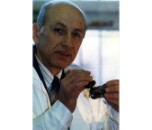
Chair
Alexander A. Sysoev
National Research Nuclear University MEPhI, Russia
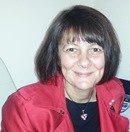
Co-Chair
Dijana Matak-Vinkovic
University of Cambridge, UK
Session Introduction
Miral Dizdaroglu
National Institute of Standards and Technology, USA
Title: Measurement of DNA repair proteins in cancer by mass spectrometry

Biography:
Dr. Dizdaroglu has obtained his PhD at the Karlsruhe Technical University, Germany, and subsequently worked for 7 years at the Max-Planck-Institute for Radiation Chemistry, before moving to USA. He has been at the National Institute of Standards and Technology (NIST) for more 30 years. In 2006, Dr. Dizdaroglu was conferred upon the rank of NIST Fellow. To date, he published highly cited 247 papers. Dr. Dizdaroglu received numerous scientific awards including the Hillebrand Prize of the American Chemical Society, and the Silver and Gold Medal Awards of the US Department of Commerce. He was also awarded two Honorary Doctorates.
Abstract:
DNA damage occurs in living organisms by exogenous and endogenous sources. Unless repaired, DNA damage can cause genomic instability that may give rise to disease processes including carcinogenesis. Cancer tissues overexpress DNA repair proteins, leading to therapy resistance. Evidence suggests that DNA repair capacity may be a predictive biomarker of patient response. Thus, accurate measurement of DNA repair proteins in disease-free tissues and malignant tumors of patients may be essential in cancers, and for the development and use of inhibitors of these proteins in cancer therapy, and for determining the response of patients. We developed methodologies involving LC-MS/MS with isotope-dilution to positively identify and accurately quantify DNA repair proteins in human tissues. For this purpose, we produced and purified full length 15N-labeled analogs of human DNA repair proteins as internal standards. Following trypsin digestion, we identified numerous tryptic peptides of both unlabeled and 15N-labeled proteins by their full scan and product ion spectra. Next, we identified and quantified several DNA repair proteins in various human cultured cell lines, and in human disease-free breast tissues and malignant breast tumors. Extreme expression of the proteins in cancer cells and in malignant breast tumors was observed, suggesting that cancer cells may overexpress DNA repair proteins for survival. The approach described is expected to be applicable to the measurement of expression levels of DNA repair proteins in malignant tumors vs. surrounding disease-free tissues in patients. This attribute may help develop novel treatment strategies and DNA repair inhibitors as potential anticancer drugs, and guide therapies.
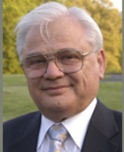
Biography:
Dr. Steven Soldin is a Senior scientist at NIH. He is also an Adjunct Full Professor at Georgetown University in the Department of Endocrinology and Metabolism. He has published 271 papers. His research interests focus on the role of specificity in improving patient diagnosis and treatment. He recently showed a statistically significant diurnal fluctuation in steroid concentrations for all steroids tested except progesterone. The extent of this diurnal variation is so large that it necessitates development of time dependent reference intervals. The role of mass spectrometry in improving patient diagnoses in hypothyroidism (5.7 % of population) and adrenal disease (7.4% of population) has been demonstrated.
Abstract:
Thyroid studies: Hypothyroidism affects around 5.5% of the population. Over the past 15 years we have shown that accurate and precise measurement of thyroid hormones employing mass spectrometry instead of immunoassay alters the classification of 2/3 of the patients with subclinical hypothyroidism and >50% of patients with hypothyroidism. Our studies have also shown that results for FT4 and FT3 measured by tandem mass spectrometry agree far better with TSH or log TSH and the patients clinical condition than FT4/FT3 measured by immunoassays. Also we show that measurement of FT3 and TT3 by immunoassay is unreliable, especially at low FT3/TT3.
Adrenal hypo and hyper function: Occurs approximately in 7.3% of the population.Employing tandem mass spectrometry to measure a serum steroid profile we have shown that 11-DOC and DHEA are superior to measuring cortisol after ACTH stimulation tests. Current practice requires measurement of only cortisol and are clearly suboptimal. Also right and left adrenal vein catheterization allow identification of excessive production and whether it was unilateral or bilateral .
Pietro Traldi
Paediatric Research Institute “Città della Speranzaâ€, Italy
Title: Investigation on bimolecular complexes in natural extracts by parent ion and neutral loss MS/MS experiments
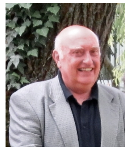
Biography:
Pietro Traldi obtained was graduated in physics in 1973 from Milan University. From 1974 to 2015 he was Research Executive at the Italian Research Council, working mainly in the field of mass spectrometry. He has published more than 600 papers in international journals. Actually he collaborates with the Paediatric Research Institute “Città della Speranza” in Padova and with Aboca SpA, Italy.
Abstract:
Many of the mechanisms of action of drugs can be explained by the theory of "lock and key": an active molecule to produce a pharmacological effect has to interact with the receptor site. However, in a highly complex biological system, such as a plant extract, hundreds of different molecules interact with each other leading to aggregation phenomena between different molecular systems. Then the formation of complexes between different molecules must be considered highly probable and the biological activity would have to be ascribed to molecular complexes rather than to a single molecule. A good example of this aspect is that related to tea, with complexes between caffeine and catechins, in particular epigallocatechin gallate (EGCg). The formation of these complexes has been studied in detail, showing that caffeine and EGCg in the solid state pile up to form complex stacks. By studying solutions 1H-NMR investigations show clear differences among the caffeine signals in the spectrum of pure, synthetic compound and those present in tea extracts. In the present investigation the capabilities of tandem mass spectrometry for the detection of these bimolecular complexes have been studied by ESI-QqQ instrumental approach. The presence of complexes in tea extracts has been tested either by precursor ion scans of the caffeine protonated molecule or by neutral loss scans aimed to find all the possible ionic species which loose neutral caffeine. By these approaches different molecular caffeine containing complexes have been evidenced.
Małgorzata Iwona Szynkowska
Lodz University of Technology, Poland
Title: Advances in Applications of Mass Spectrometry (ToF-SIMS, LA-ICP-ToF-MS) for Forensic Analysis

Biography:
Małgorzata Iwona Szynkowska received her PhD degree in 1999 from the Faculty of Chemistry, Lodz University of Technology, Poland, DSc degree in 2008, and full professor in 2016. Scientific and research fields include the applications of modern techniques (ToF-SIMS, SEM-EDS, ICP-OES, ICP-MS, LA-ICP-ToF-MS, AAS) in forensic chemistry, trace elements analysis (mainly environmental protection) and heterogenous catalysis. From 2016 she is a Dean of the Faculty of Chemistry. She has published over 100 papers, including more than 80 papers in reputed journals and 20 invited book chapters. She has been a head or main investigator of almost 20 scientific projects.
Abstract:
Mass spectrometry techniques, ToF-SIMS (time- of- flight secondary mass spectrometry) and LA-ICP-ToF-MS (laser ablation inductively coupled plasma time- of- flight mass spectrometry), are promising and very attractive tools in solving many important problems of forensic sciences. Surface imaging, the possibility of a reliable identification of substances on the surface with great analytical sensitivity and low detection limits allow one to discriminate samples found as evidence in different criminal cases. ToF-SIMS can be a powerful tool in chemical investigations of fingerprints left on different surfaces and polluted by traces of exogenous substances (e.g. traces of drugs, gunshot residues - GSR) which do not exist in natural excretion. This method makes it possible to characterize traces of substances transferred from the suspect’s finger or from the object (e.g. glass, mug, table, mobile phone) using special secondary basis like professional dactyloscopy tapes. It may be potentially applied in characterization of tobacco samples, drugs, inks and documents. Examinations using LA-ICP-ToF-MS proved that it can be potentially used for an elemental characterization of toners, inks, papers, gunshot residues, fragments of automotive paints, samples of hair and bones. The above mentioned methods can successfully complement conventional techniques used for forensic studies as they play a significant role in providing information on the chemical components and surface visualisation of forensic traces.
Amit Tzur
Bar Ilan University, Israel
Title: Integrated Microfluidics for Protein Modification Discovery
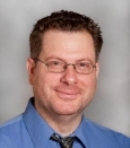
Biography:
Amit Tzur has completed his PhD from the Hebrew University of Jerusalem, Israel and his postdoctoral training from Harvard Medical School, Boston MA. He is an Assistant Professor at the Faculty of Life Sciences, Bar Ilan University, Israel, and a member of the Bar Ilan’s Institute of Nanotechnology and Advanced Materials (BINA) and the Israel Center of Excellence (I-CORE). Amit’s research focuses on physiology and molecular dynamics of proliferating cells. He has published dozens of papers in reputed journals and serving as an editorial board member.
Abstract:
Protein post-translational modifications mediate dynamic cellular processes with broad implications in human disease pathogenesis. There is a large demand for high-throughput technologies supporting posttranslational modifications research, and both mass spectrometry and protein arrays have been successfully utilized for this purpose. Protein arrays override the major limitation of target protein abundance inherently associated with MS analysis. This technology, however, is typically restricted to pre-purified proteins spotted in a fixed composition on chips with limited life-time and functionality. In addition, the chips are expensive and designed for a single use, making complex experiments costprohibitive. Combining microfluidics with in situ protein expression from a cDNA microarray addressed these limitations. Based on this approach, we introduce a modular integrated microfluidic platform for multiple post-translational modifications analysis of freshly synthesized protein arrays (IMPA). The system's potency, specificity and flexibility are demonstrated for tyrosine phosphorylation, autophosphorylation, and ubiquitination in quasicellular environments. Unlimited by design and protein composition, and relying on minute amounts of biological material and cost-effective technology, this unique approach is applicable for a broad range of basic, biomedical and biomarker research.
Dijana Matak-VinkovicÌ
University of Cambridge, UK
Title: Mass Spectrometry Reveals Protein Kinase CK2 High-Order Oligomerization via the Circular and Linear Assembly
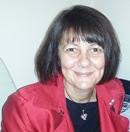
Biography:
Dr Dijana Matak-VinkovicÌ has completed her PhD at the age of 30 years from University of Zagreb (Croatia). She is Senior technical officer and head of the Mass spectrometry service at the Department of Chemistry, University of Cambridge. She has published more than 30 papers in reputed journals.
Abstract:
CK2 is an intrinsically active protein kinase that is crucial for cellular viability and exists as a heterotetrameric holoenzyme (α2/β2) composed of two catalytic α subunits (denoted as CK2α or α) attached to a central, regulatory dimer of β subunits (denoted as CK2β or β2). However, conventional kinase regulatory mechanisms do not apply to CK2, and its mode of regulation remains elusive. Interestingly, CK2 is known to undergo reversible ionic-strength-dependent oligomerization. Furthermore, a regulatory mechanism based on autoinhibitory oligomerization, driven by the inter-holoenzyme electrostatic interactions between the acidic loop of CK2β and the basic substrate-binding regions of CK2α, has been postulated based on the observation of circular trimeric oligomers and linear CK2 assemblies in various crystal structures. Here, native mass spectrometry (MS) was employed to monitor the assembly of oligomeric CK2 species in an ionic-strength-dependent manner. Subsequently, ion mobility spectrometry-MS (IMS-MS) was used to examine the conformational state of the CK2 oligomers. To validate the findings from IMS-MS, hydrogen−deuterium exchange mass spectrometry (HDX-MS) was used to analyze the solution-phase conformation of CK2 oligomers. Through the use of a suite of orthogonal mass spectrometric techniques (native MS, IMS-MS and HDX-MS), it was shown that CK2 undergoes ionic-strength dependent oligomerization to form both circular and linear supramolecular assemblies, thus representing a novel mechanism of regulation for protein kinases. The results were consistent with previously proposed models of CK2 oligomerization derived from X-ray crystallographic analysis and in vivo evidence of CK2 aggregation.
- Applications of Mass Spectrometry | Proteomics and its applications

Chair
Marek M Kowalczuk
University of Wolverhampton, UK

Co-Chair
Kay Ohlendieck
Maynooth University, Ireland
Session Introduction
Jindra Valentová
Comenius University in Bratislava, Slovakia
Title: Identification of designer drugs by real time-mass spectrometry (DART-MS)

Biography:
Jindra Valentova, PhD is associate professor and vice-dean at Faculty of Pharmacy, Comenius University in Bratislava. Her research interest is focused on bioanalysis of new pharmaceuticals and illicit drugs using modern mass spectrometry methods. She is leader of numerous research domestic and international projects and she has published more than 50 papers in reputed journals.
Abstract:
Over the past decade, the availability of new psychoactive substances on European illicit drug market has increased considerably. These new synthetic compounds often termed „designer drugs“ or „legal highs“ exhibit modified molecular structure as compared to the established illicit substances. Synthetic cannabinoids and cathinones make up the largest groups of designer drugs.They were developed with the intention of mimicking the effect of traditional illicit drugs of abuse and are aimed at circumventing the laws regulating sale and use of controlled substances. Wide structure diversity limits the possibilities of their detection with conventional colour tests or immunoassays. Great effort is undergoing to develop new methods for identification and quantification of these modern drugs, in particular new mass spectrometry techniques. DART (Direct Analysis in Real Time) mass spectrometry is an ambient ionization method which allows direct analysis of all types of samples (solid, gas, liquid) without the need for any sample preparation. In our work, the usefulness of DART ion source in combination with the high-resolution ORBITRAP mass spectrometer is demonstrated for screening of cathinones and synthetic cannabinoids. Several different cannabinoids in complex herbal matrices were detected. The analysis enabled rapid detection of these substances without the necessity of pre-treatment of the samples. This method could be also used for fast and reliable identification of contamination of e.g. money notes touched with fingers stained by illicit drugs.
Kay Ohlendieck
National University of Ireland, Ireland
Title: Mass spectrometry-based proteomic profiling of muscular dystrophy

Biography:
Kay Ohlendieck has an undergraduate degree in Biology from the University of Konstanz, Germany (1985), a PhD in Biochemistry from University College Cork, Ireland (1989) and a D.Sc. in Muscle Biology from University College Dublin, Ireland (2011). He has worked as a postdoctoral associate at the University of Iowa, Iowa City and at the State University of New York, Stony Brook, as well as a Lecturer in the Department of Pharmacology, University College Dublin (1995-2001). Since 2002, he is Professor & Chair of Biology at Maynooth University, National University of Ireland, and his research focuses on skeletal muscle proteomics.
Abstract:
Mass spectrometry-based proteomics is a key bioanalytical technique for the comparative analysis of pathological specimens. In the field of neuromuscular disorders, both two-dimensional gel electrophoresis and liquid chromatography have been employed for the large-scale separation of distinct protein populations prior to mass spectrometric analysis. Our laboratory has focused on the systematic profiling of animal models of Duchenne muscular dystrophy, a devastating muscle wasting disease of early childhood. X-linked muscular dystrophy is due to primary abnormalities in the Dmd gene that encodes the membrane cytoskeletal protein dystrophin. For the mass spectrometric identification of new biomarker candidates of dystrophinopathy, we used two complementary methods, fluorescence two-dimensional difference in-gel electrophoresis and liquid chromatography in combination with label-free mass spectrometry. Novel skeletal muscle-associated disease markers of fiber degeneration, myofibrosis and sterile inflammation are involved in the excitation-contraction-relaxation cycle, the extracellular matrix, the cytoskeleton, energy metabolism and cellular stress. In addition, tissue samples from the dystrophic heart and the central nervous system, as well as serum, were analysed by proteomics. Independent verification studies were carried out by immunoblotting and immunofluorescence microscopy. In the future, the newly established proteomic biomarker candidates of X-linked muscular dystrophy may be useful for improving diagnostic, prognostic and therapy-monitoring approaches, as well as the identification of new therapeutic targets down-stream of the primary abnormalities in the cytoskeletal network.
Steven J. Bark
University of Houston, USA
Title: A Mass Spectrometry Perspective on Dormancy and Antibiotic Tolerance in Bacteria
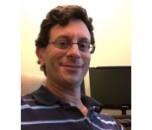
Biography:
Steven J. Bark obtained his Ph.D. from The Scripps Research Institute (TSRI) with Professor Stephen B.H. Kent. He has served as the Director of the Center for Protein Sciences at TSRI before joining University of California San Diego as an Associate Project Scientist, Adjunct Assistant Professor, and Member of the Clinical and Translational Sciences Institute. Dr. Bark is currently an Assistant Professor in the Department of Biology and Biochemistry at University of Houston. His research program applies mass spectrometry, analytical chemistry, and systems biology to understand how dormancy stress responses regulate bacterial pathogenesis and evasion of antibiotics.
Abstract:
Dormancy is a protective state where diverse bacteria including M. tuberculosis, S. aureus, T. pallidum (syphilis), and B. burgdorferi (Lyme Disease) curtail metabolic activity to survive severe external stresses including antibiotics. Dormancy appears to consist of a continuum of interrelated states including viable but nonculturable (VBNC) and persistence states implicated in antibiotic tolerance, reemergence from latent infections, and even quorum sensing and biofilm formation. To eliminate dormancy as a mechanism for antibiotic tolerance, we must bridge a critical gap in current knowledge; our limited understanding of the protein mechanisms regulating persistence and VBNC dormancy states. To elucidate some of these mechanisms, we have queried the VBNC state of Micrococcus luteus NCTC 2665 (MI-2665) by quantitative proteomics combining gel electrophoresis, HPLC and tandem mass spectrometry. MI-2665 is well suited for these studies being a non-pathogenic actinobacterium containing a small 2.5 Mb, high GC-content genome and exhibiting a well-defined VBNC state induced by nutrient deprivation. The MI-2665 VBNC state demonstrated a loss of protein diversity accompanied by upregulation of 18 proteins that are conserved across Actinobacteria, of which 14 have not been previously identified. In this talk, I will discuss these proteins and their implication of an anaplerotic strategy in VBNC transition exploiting the glyoxylate shunt, redox and amino acid metabolism, and ribosomal regulation. These results indicate a VBNC protein-level signature and suggest the viability of MI-2665 as model for dissecting the protein mechanisms underlying this stress response. I will also discuss the broader implications of our results for understanding protein regulation of dormancy and for therapeutic targeting of dormant bacterial infections.
Luis F. Guido
University of Porto, Portugal
Title: Detection and quantification of acrylamide in cookies by LC-ESI-Orbitrap
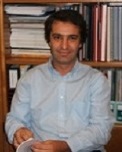
Biography:
Luis Guido has completed his PhD in Analytical Chemistry from University of Porto (2004). He is Assistant Professor at the Faculty of Sciences, University of Porto, since 2004. He has published more than 40 papers in SCI indexed journals and 2 book chapters. He is reviewer for more than 10 peer-reviewed journals and editorial board member of several journals.
Abstract:
Acrylamide (AA) is a molecule which is easily formed in food rich in carbohydrates, such as cookies, and breakfast cereal, at temperatures above 120 °C. This discovery caused some alarm and immediately enough pressure on the food industry in order to conduct research on the acrylamide content in their food products. Thus, it is eminent the need to detect and quantify the acrylamide content in the final products of food industry, in order to delineate the limits and mitigation strategies. In this context, the main purpose of this project was to optimize and apply a method of analysis and quantification of acrylamide for specific food matrices of cookies, by using LC-MS/MS with electrospray ionization and Orbitrap as mass analyser. The developed analytical method showed good repeatability, with a coefficient of variation of 11.1% (254.1 to 292.0 μg/kg). Results for AA concentration obtained vary between 323.7 and 2056.1 μg/kg. During cooking it was observed an increase in acrylamide concentration, as well as between samples taken from different areas of the baking belt. Statistical processing of data was performed in order to compare the acrylamide levels with several production parameters, such as time/cooking temperature, placement on the cooking conveyor belt, color and moisture for different cookies. The composition of the raw materials of the cookies was statistically the most correlated factor with the AA content when considered all samples. The statistical treatment presented herein enables an important prediction of factors influencing AA formation in cookies for development of mitigation strategies.

Biography:
Luisa Mattoli has completed her PhD at the age of 29 years from University of Perugia (Italy). She is medicinal chemistry pharmacist, scientific head of the Aboca SpA Phytochemistry Research Area. She has published 19 papers in reputed journals and serving as an editorial board member of repute. She is member of the executive board of the Mass Spectrometry Division of the Italian Chemical Society.
Abstract:
Natural products in medicine have a long tradition of use all over the world. Today it is mandatory to assure their efficacy and safety through standardized processes (following Good Manufacturing Practices, GMPs) from the raw material to the formulated products. It is obvious that together with rigorous process controls, an adequate analytical policy can help to ensure the production chain’s quality. Mass Spectrometry plays a relevant role as by using HRLC-MS, GC-MS, IRGC-MS, ICP-MS it is possible to characterize globally natural complex products. As the technology improved, today the research results can be transferred in the real world of the quality control of industrial production facilities. Untargeted metabolomic analysis by means of ESI-MS methods with multivariate statistical analysis can be an effective tool to check batch compliance, assuring constancy on the therapeutic effect. Targeted metabolomic analysis, by using a “in house” compound library (Aboca was able to build up a library of about 1000 standards) through HRLC-MS and GC-MS methods is useful to identify and quantify as much compounds as possible, achieving the correct compositional knowledge of complex natural products. Metallomic analysis by ICP-MS (also coupled with HPLC or ionic chromatograph) is essential, as inorganic salts or organometallic complexes are naturally presents and contribute to give the characteristic bioavailability to natural complex products. In conclusion, as it is known that all the compounds present in natural complex products contributes to their multi-targeted action and consequently to their specific effect, here it is presented an holistic approach to get a comprehensive panorama of natural complex product’s composition, useful in routine quality control: identification test and batch release, stability monitoring program, check of production process robustness.
Alexandra Maria Moita Antunes
Instituto Superior Técnico / Centro de QuÃmica Estrutural, Portugal
Title: Mass spectrometry application to molecular toxicology and biomarker discovery: carcinogen-modified histones

Biography:
Alexandra M.M. Antunes has completed his PhD at the age of 29 years from Universidade Nova de Lisboa (Portugal). She is Chemical Toxicologist, Principal Researcher of a team focusing on the use of covalent adducts formed with proteins (adductomics), directed towards the development of early biomarkers of chemical carcinogens and risk assessment of drugs used in chronic therapies, at Instituto Superior Técnico (Portugal). She has published more than 40 papers in reputed journals.
Abstract:
Human exposure to chemical agents of drug, dietary, occupational or environmental exposure is a main public health concern, as a major cause of cancer. Despite, most of the chemically-induced cancers could be averted upon preventive measures, encompassing accurate monitoring and regulatory action, only a little over 100 compounds are currently classified as “carcinogenic to humans” by the International “Agency for Research on Cancer”. This is mainly a reflection of the difficulty in accurately assessing human exposure and classifying the carcinogenic potential of chemical agents. Therefore, more accurate and earlier compound-specific biomarkers of chemical carcinogenesis are urgently needed. Using the food contaminant and rodent carcinogen furan as model, the first evidence for in vivo occurrence of carcinogen-modified histones were recently provided by mass spectrometry-based methodologies. A furan-derived adduct was identified in liver histone 2B of rats treated with tumorigenic doses of furan. Taking into consideration that the formation of furan-derived DNA adducts is yet to be provided, furan-modified histone 2B may provide a toxicologically relevant furan-specific biomarker of carcinogenicity. Importantly, this adduct was identified prior to epigenetic modifications, which is consistent with the occurrence of carcinogen-modified histones at early stages of exposure. Recent advances on the detection of histone adducts with other chemical carcinogens suggest that these modifications are general in scope. Consequently, the covalent modification of histones by chemical carcinogens or their metabolites may provide relevant early compound-specific biomarkers of cancer. This is anticipated to be useful for accurate risk assessments, allowing efficient regulatory measures, and ultimately leading to decreased incidence of chemically-induced cancers.
Ana R. Ribeiro
Universidade do Porto, Portugal
Title: Eco-friendly UHPLC-MS/MS method for analysis of multi-class micropollutants in drinking water
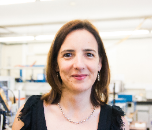
Biography:
Organic micropollutants are continuously introduced into the environment, being not completely removed during wastewater treatment and found at trace concentrations (ng/L─µg/L) in receiving water bodies, which might be sources for drinking water (DW) supply, bringing possible consequences for public health [1]. In the particular case of the European Union (EU), some regulations on water pollution have been published in the last years, namely Directive 39/2013/EU [2] identifying 45 priority substances (PSs) to meet the protection of the aquatic compartments and the human health. More recently, a Watch List of contaminants of emerging concern (CECs) for EU monitoring in surface water bodies was defined in the Decision 2015/495/EU [3]. An eco-friendly analytical method based on offline solid phase extraction followed by ultra-high-performance liquid chromatography coupled to tandem mass spectrometry (SPE-UHPLC-MS/MS) was developed for the simultaneous determination of 21 pollutants in DW: 7 pesticides, 1 industrial compound, 12 pharmaceuticals and 1 metabolite, some of them defined as PSs in the Directive 2013/39/EU or CECs included in the recent Watch List of Decision 2015/495/EU. A widespread occurrence was verified at ng/L levels in DW samples from different sources (tap, wells and fountains) and locations of North of Portugal, but the estimated hazard quotients suggested no adverse effects to humans.
Abstract:
Dr Ana Rita Ribeiro has a strong expertise in analytical chemistry and environmental monitoring and policy, and relevant skills in the field of water treatment by advanced processes. She initiated a new research line at Laboratory of Separation and Reaction Engineering - Laboratory of Catalysis and Materials (LSRE-LCM), Faculdade de Engenharia da Universidade do Porto, implementing analytical methodologies to determine organic pollutants at residual concentrations in environmental samples using UHPLC-MS/MS to identify transformation products. She is author/co-author of 30 original publications, including peer-reviewed scientific journals and books, as well as the 45 oral and poster communications in both national and international conferences.
- Applications of Mass Spectrometry | New Approaches in Mass Spectrometry | Chromatography and High Performance Liquid Chromatography (HPLC)
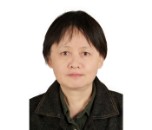
Chair
Jin Ouyang
Beijing Normal University, China

Co-Chair
Fernando Ramos
University of Coimbra Health Sciences, Portugal
Session Introduction
V. Sabareesh
Vellore Institute of Technology (VIT) University, India
Title: Arginine modification by 1,2-dicarbonyl compounds studied by liquid chromatography - electrospray ionization mass spectrometry (LC-ESI-MS)
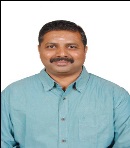
Biography:
Sabareesh pursued PhD in Molecular Biophysics Unit, Indian Institute of Science, Bengaluru, India with Prof. P.Balaram’s guidance. He received Prof. B.H.Iyer medal for best PhD thesis: Mass spectrometric sequencing of acyclic and cyclic peptides for 2007-08. He did postdoctoral research with Prof. Simon Gaskell in Michael Barber Centre for Mass Spectrometry, University of Manchester, UK, during 2008-09. He got Young Scientist Award from Indian Society for Mass Spectrometry in 2013 and is a recipient of ‘Start-Up Research Grant (Young Scientists)’ from SERB, Government of India. His research interest is ‘biomolecular mass spectrometry’, specifically tandem mass spectrometry of peptides and proteins
Abstract:
1,2-dicarbonyl compounds are highly selective in covalently modifying sidechain guanidine group of arginine. Hence, these compounds find application for understanding the importance of arginine in enzymes, e.g. ATPase, kinase, etc. that recognize anionic substrates. Studies by radioactive 14C labeled phenylglyoxal (PG) or electrospray ionization mass spectrometry (ESI-MS) show that either 1 or 2 molecules of PG modify guanidine moiety of arginine in enzymes; whereas MS based investigations indicate addition of only one molecule of 1,2-cyclohexanedione (CHD) onto guanidine group of arginine in proteins/peptides. To attain clearer insights, herein we decided to probe amino acid L-arginine (L-Arg) modification by liquid chromatography (LC) - ESI-MS (LC-ESI-MS). Reactions were conducted using equimolar concentrations of reactants at room temperature (250C) in seven different mediums. In borate buffer, exclusively 1:1 adduct of L-Arg:PG (m/z 309) is observed. However, with CHD, L-Arg forms 1:1 adduct (m/z 287), 1:2 adduct (m/z 399) and respective water condensed products (m/z 269 & m/z 381) in borate. Interestingly, in water medium too, L-Arg is modified yielding condensed and uncondensed products of both 1:1 and 1:2 stoichiometries with PG as well as CHD. This is the first LC-ESI-MS study on L-Arg modification accomplished by phenylglyoxal and 1,2-cyclohexanedione. Additionally, observations from modification by 2,3-butanedione and LC-ESI-tandem MS (MS/MS) investigations on some model peptides containing one or two arginines shall be discussed. Furthermore, results obtained from the experiments conducted on a model protein, bovine pancreatic ribonuclease A will also be presented.
Jin Ouyang
Beijing Normal University, China
Title: High-throughput screening of protein-bound drugs and enzyme inhibitors using ambient mass spectrometry
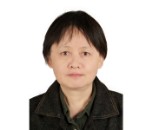
Biography:
Professor Jin Ouyang received her Bachelor degree in Shaanxi Normal University, PR China and Ph.D. degree in Ghent University, Belgium. She is now working as a professor at Beijing Normal University, PR China. She is engaged in developing analytical methods based on mass spectrometry coupling to chromatography and electrophoresis, as well as applications of the methods to biological and pharmaceutical analysis. She received several Award such as the Chinese Female Analyst Award, China Association of Instrumental Analysis (CAIA) Award, and the State-level teaching famous teacher award. She published over 100 papers on peer-reviewed journals such as Anal. Chem., Adv. Funct. Mater., Chem. Commun., Nano lett., Small, etc.
Abstract:
High-throughput screening (HTS) of protein-bound drugs and enzyme inhibitors is important for obtaining rapid understanding of drugs or enzyme inhibitors, which is significant in the developments of new drugs or mechanism studies in life science. Recently, ambient mass spectrometry has been applied for the rapid detection without sample pretreatment, which has potentials in real-time monitoring or high-throughput screening. In our group, several works on high-throughput screening of protein-bound drugs and enzyme inhibitors have been employed using ambient mass spectrometry. Firstly, we developed a rapid screening method for the detection of protein-bound small molecules using desorption electrospray ionization mass spectrometry (DESI-MS) [1]. The mechanism study on the interaction between DNA topoisomerase and inhibitors of camptothecin was carried out, and the relative binding strength was determined. Subsequently, the rapidly detection of 21 small molecule drugs has been successfully achieved within 1.75 minutes, enabling the high-throughput screening. In addition, a house-made platform combining with DESI has been constructed for examining the affinity between candidate ligands and anion-binding sites protein α1-acid glycoprotein [2], and the detection of 45 samples have been finished in 2.3 minutes. To further improve the high-throughput detection, a self-made protein microarray was fabricated combing with DESI-MS, which obtained the high-throughput examination of matrix metalloproteinase-9 interaction with 88 drug molecules [3]. Furthermore, we used venturi easy ambient sonic-spray ionization mass spectrometry (V-EASI-MS) to monitor the binging affinity between drug and α1-acid glycoprotein in real time [4]. By combining V-EASI-MS with liquid microfluidic technology, the high throughput screening of enzyme inhibitor drugs was further developed with a good stability [5], which achieved the detection frequency of 1.5s / sample. Therefore, the ambient mass spectrometry were effective in the high-throughput screening or detection of protein-bound drugs and enzyme inhibitors, which would show potentials in drug industry or clinical diagnosis.
Natalja P. Nørskov
Aarhus University, Denmark
Title: Application of Liquid Chromatography - Mass Spectrometry in the analysis of phytochemicals
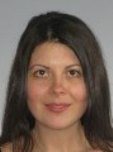
Biography:
Natalja P. Nørskov has completed her PhD at the age of 37 years from Aarhus University (Denmark). After her PhD she continued her work as a postdoc at Aarhus University working on development of high throughput methods for quantitative metabolomics using LC-MS instruments. Many of the methods are now published in the international journals. She is also a leader of a PhD course titled, “Hands-on targeted and untargeted LC-MS metabolomics with emphasis on measuring phytochemicals in plasma and urine”.
Abstract:
Phytochemicals are non-nutritive compounds found in plant foods such as fruits, vegetable, cereals and etc. They have received attention in human nutrition due to their health beneficial effects, mainly as antioxidants. Particular class of phytochemicals, lignans have gained further interest due to their promising role in the prevention of lifestyle diseases. However, it is essential for epidemiological studies to have more evidence to be able to link the intake of lignans to this promising role. In this context, it is necessary to study large population groups to obtain sufficient statistical power. The aim of this study was to develop quantitate LC-MS/MS methods for high throughput of samples with high sensitivity, meeting the needs of analytical laboratories. The quantification of biofluids was performed on microLC coupled to QTrap 5500 Mass Spectrometer. In the first method we have quantified two enterolignans, enterolactone and enterodiol, and eight plant lignans. In the second method we have quantified enterolactone in its intact forms as glucuronide and sulfate. Both methods contain only one extraction step using Solid Phase Extraction, good chromatographic separation on the reverse-phase columns and short chromatographic runs. The importance of these new methods is two-fold. Firstly, since the methods are rapid and easy to perform they can be used for high throughput of samples and therefore will be the methods of choice for future epidemiological investigations and clinical diagnosis. Secondly, we hope that measuring enterolactone in its intact forms will contribute with new knowledge on the role of enterolactone in human health.
Fernando Ramos
Universidade de Coimbra, Portugal
Title: Mass Spectrometry - an important tool in Food Safety for veterinary drug residue analysis

Biography:
Abstract:
In the last decades, Food Safety became one of the most important subjects worldwide for many important international organizations including, as well known, the European Commission. To protect consumers, from the health risks associated with the presence of residues of veterinary drugs in food products of animal origin, the European regulatory agencies settled official documents to keep these substances and their administration under control. To perform such control, sensitive and specific analytical methodologies are requested for the determination of veterinary drug residues in food, of animal origin, destined to human consumption. The most efficient analytical technology used in this field is liquid or gas chromatography coupled with mass spectrometer detector. The mandatory European Commission criteria, for quantitative and confirmatory determinations in veterinary drug analysis, are the main reason why the triple quadrupole mass spectrometer detector is still the principal analytical tool of choice. Those equipments guarantee an unequivocal identification of trace concentrations in complex matrixes such as biological samples (foodstuff as muscle, eggs, milk, liver, fat and kidney). Such mass spectrometry detectors coupled with liquid chromatography (LC-MS/MS) is a powerful tool allowing multi-compound detection by recording full mass spectra (scan mode), selected ion monitoring (SIM) and multiple reaction monitoring (MRM). More recently, it started to grow the application High Resolution Mass Spectrometry (HR-MS), as Time-of-Flight (ToF) or Orbitrap-MS, in residues analysis but the high cost associated with those equipments along with the fact that it is not completely clear how to apply the performance and validation criteria in those methods, according to legislation, are the main drawback for their use.
Sermin Tetik
Marmara University, Turkey
Title: HPLC Based Method for Proteomic Biomarker Analysis: Application to in vivo Drug Metabolite in Human Plasma

Biography:
Dr. Sermin Tetik received her PhD degree from the Biochemistry Department, Faculty of Pharmacy, University of Marmara (Istanbul-Turkey). Currently, she is a proffesor at the same University. She has joined two research programmes as wisiting professor; one of them was at Pharmacology-Pathology Depatrment of the School of Medicine at Loyola University, Chicago and the other one was at Florida Cancer Research Institute of Florida University, Orlando, USA. Dr. Tetik heads her research group which have focuses on thrombosis–hemostasis, proteomics, biomarkers and modified protein structure/function on different diseases. She has published over 40 scientific articles and over 40 international abstracts in reputed journals, several book chapters, and gave many invited lectures. She has served as editorial board member of reputed journals, she has received several awards and honors.
Abstract:
Today, coronary arterial disease (CAD) is a prominent cause of death in developed and developing countries. It is known that CAD is more prevalent in Turkey than in Western countries and it appears that this rate of prevalence is likely to increase in the coming years. Atorvastatin, which is a drug, is a 3-hydroxy-3-methylglutaryl-coenzyme A (HMG-CoA) reductase inhibitor, which limits the rate of cholesterol biosynthesis. Paraoxanase 3 (PON3) is related to high density lipoprotein (HDL) and it has been suggested that it protects low density lipoprotein (LDL) against oxidation. Paraoxanase 3 activity in human blood plasma is considered to be an adequate biomarker for tracking premature atherosclerosis but it has not yet been used in any official method for tracking atorvastatin which reaches systematic circulation and stimulates PON3 activity. In our experimental model, we aimed to characterize of PON3 activity in human blood with atorvastatin (AT) as a substrate and its metabolite, hydroxyacid atorvastatin (HAT). We used a modified method steming from different methods. Patients with atherosclerosis were divided into two subgroups as pre- and post-operation. Blood samples were collected from patients with atherosclerosis who took atorvastatin (20mg/day). Separation of AT and HAT was evaluated on an liquid chromatography (C18) column. This study reports an accurate, sensitive and reliable liquid chromatographic method for the determination of atorvastatin and its metabolite, HAT, which, to our knowledge, constitutes the first in vivo approach in the literature.
Zhao Yun
China Waterborne Transport Research Institute, China
Title: The application of portable GC-MS on the petrochemical wharf

Biography:
Zhao Yun has completed his PhD at the age of 29 years from Institute of Chemistry, Chinese Academy of Sciences(China). He is associated researcher and director of a research team focusing on VOCs detection in China Waterborne Transport Research Institute. He has published more than 10 papers in reputed journals.
Abstract:
There are many kinds of volatile organic compounds(VOCs) volatilized in the air when the petrochemical wharf are working, and most of them are harmful to people. Since the VOCs detector usually matches given kinds of gases, If the exact kind of gases is undefined or is wrongly informed, there will be a big mistake in detection result. The mass spectra has an advantage over determining the gas kinds, but it’s usually heavy and its sampling mode is not convenient for quick detection. To resolve this problem, a method based on portable GC_MS for VOCs determination is developed, which is based on the portable GC-MS technology. The VOCs are directly extracted by solid phase microextraction head for 120 seconds. After that, they are analyzed on the portable GC-MS, determined by retention time and MS peaks, quantified by external standard method. It only takes 6.4min from sample extracting to get the result. However the linear correlation is larger than 0.98, and the minimum detectable concentration is lower than half of their occupational exposure limits. In the simulation test, the relative error is lower than 4.4%. This method can directly sample in the field, rarely depends on external conditions, and is very convenient to carry. It takes very short time to complete the detection, at the same time it can determine and quantify multiple kinds of VOCs at a time. So it will be very suitable for the VOCs emergency detection in the leakage scene.
